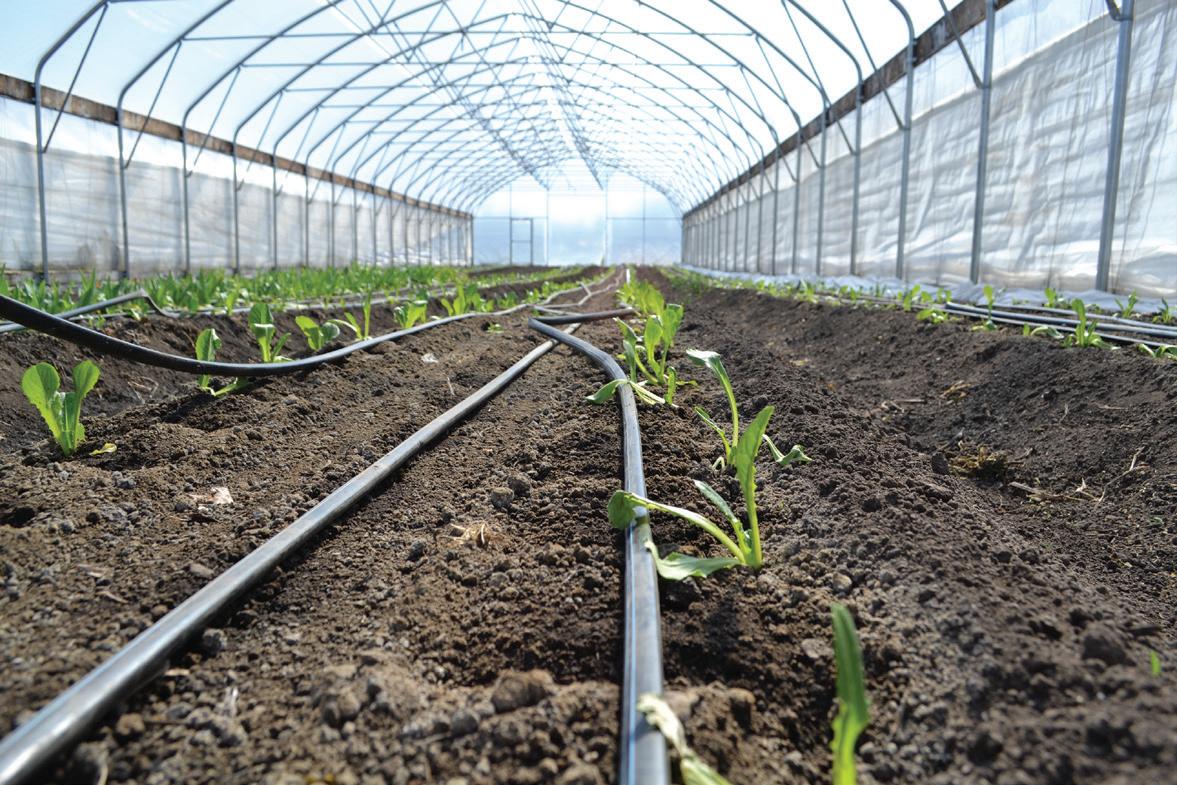
3 minute read
Climate Resilience It’s Not You, It’s the Climate
The Human Element of Building Resilience on the Farm
By Brian DeVore
Advertisement
There’s little doubt Rodrigo Cala has the skills to grow good vegetables on his certified organic operation near Turtle Lake in western Wisconsin. “I have 20 years of experience growing brassicas, so I know what I’m doing,” he says confidently.
He especially likes growing broccoli — there’s a good market for it and it’s satisfying to take in a bumper harvest. But a few years ago, he noticed weather problems caused the crop to repeatedly succumb to disease pressure. Cala tried adjusting the way he managed the soil and even the way irrigation was done, but the broccoli was still not producing at the level he was used to, and he lost money on it three years in a row, at one point tossing 70% of the crop. Today, broccoli is no longer grown on Cala’s farm.
“Numbers don’t lie, even if we think we are the greatest grower,” says the farmer with a hint of resignation in his voice.
He’s not alone — extreme weather brought on by climate change is making it difficult for farmers across the country to conduct business as usual. There’s nothing like a thousand-year storm in September, a devastating drought in August, or a killing frost in June to expose the vulnerabilities of a farming operation. And it’s not just the direct impact of extreme weather that plays havoc — excess moisture or droughty conditions can have interrelated side effects, such as creating a more hospitable environment for insect and weed pests, as well as diseases. Unfortunately, as climate change makes itself more evident, farmers of all types are grappling with weather-related calamities that test the very survival of their operations.
three-to-four times as many nights above 70 degrees. There may be more precipitation in the state by that time, but not during the summer.
“The thing that concerns me the most is we will be getting more moisture in the spring and struggling with maintaining that moisture in the soil throughout the summer, which can really stress plants,” says Greg Klinger, a University of Minnesota Extension educator who works on water quality and nutrient management issues.
extremely hot, dry summers.
“Farming will only get harder,” says Natalie Hoidal, who works on vegetable crops and local foods for U of M Extension.
Extreme weather can be particularly hard on farmers who raise specialty crops such as fruits and vegetables. Timing can be everything with such crops, and an adverse weather event can cause a farmer to miss a key marketing window. In addition, government subsidized crop insurance programs are geared mostly to benefit farmers who raise major commodity crops such as corn, soybeans, and wheat.
Rodrigo Cala’s failure to raise a profitable broccoli crop is a prime example of why today’s farmers need to develop a climate resilience plan, says regenerative agriculture expert Laura Lengnick. All too often farmers see themselves as the weak link when a weather disaster strikes. That involves a lot of self-blame. Maybe if I just worked even harder, I can muscle through this immediate situation, goes the thinking. But the author of Resilient Agriculture: Cultivating Food Systems for a Changing Climate says such a narrow approach does not build the kind of long-term agronomic, economic, and ecological sustainability successful farming operations need. Worse, it ignores the fact that the mental and physical wellbeing of the humans raising that food is just as important as the health of the soil it’s being raised in.
Vegetable farmers are becoming increasingly dependent on protective shelters and irrigation systems to deal with weather extremes. (LSP Photo)
If greenhouse gases continue their rapid rise, at least 30% of corn and wheat acres will face “adverse changes” in growing conditions by 2040, according to a study by the American Farmland Trust. This spring, University of Oklahoma researchers estimated that the risk of “flash droughts” — brief periods where high temperatures and lack of rain combine to suck moisture out of the soil rapidly — will increase in every major agricultural region in the world. In North America, cropland that had a 32% annual chance of a flash drought a few years ago could have as much as a 53% chance by the final decades of this century.
Lengnick is the director of agriculture at the Glynwood Center for Regional Food and Farming, as well as the owner of a company called Cultivating Resilience. She’s worked with farmers across the country to help them develop climate resilience plans.
During the past few years, the Land Stewardship Project has partnered with U of M Extension to help specialty crop producers develop more resilient operations in the face of climate instability. LSP and Extension are using as their guide Lengnick’s book and other resources she and others have developed.
And climate change’s negative impacts on farming only promise to worsen. By the middle of this century, Minnesota will be having twice as many 90-degree days and
For much of Minnesota and other spots in the Midwest, the 2022 growing season, as well as the beginning of the 2023 season, could be harbingers of what’s to come:
Farmers need to take a holistic approach which gives as much emphasis to a farmer’s wellbeing as it does to the ecological health of the farm and the operation’s productivity and profitability, says Lengnick, whose background is in vegetable production. And the farmers’ values and the role their operations play in the health of the community must also be taken into account. Lengnick
Climate, see page 20…









